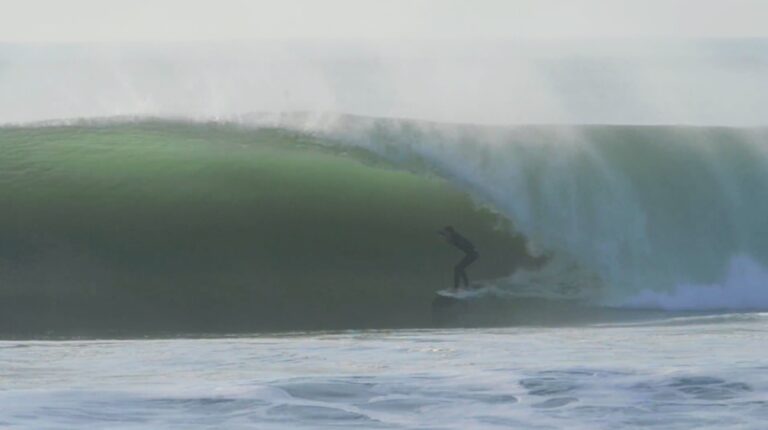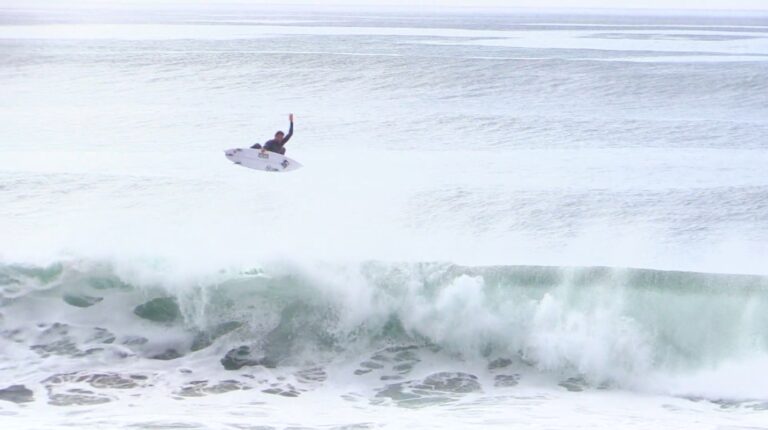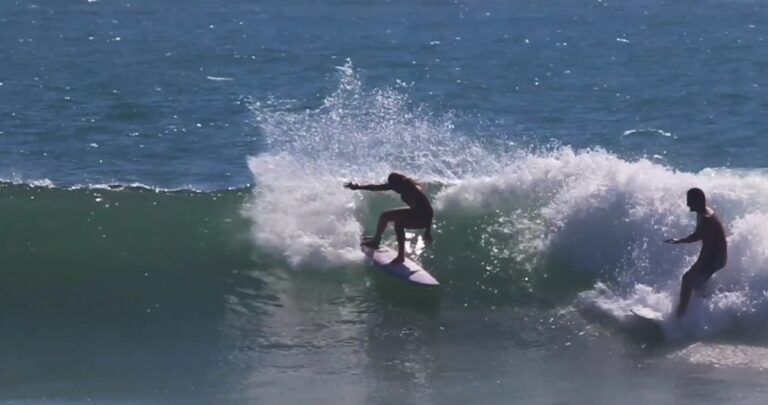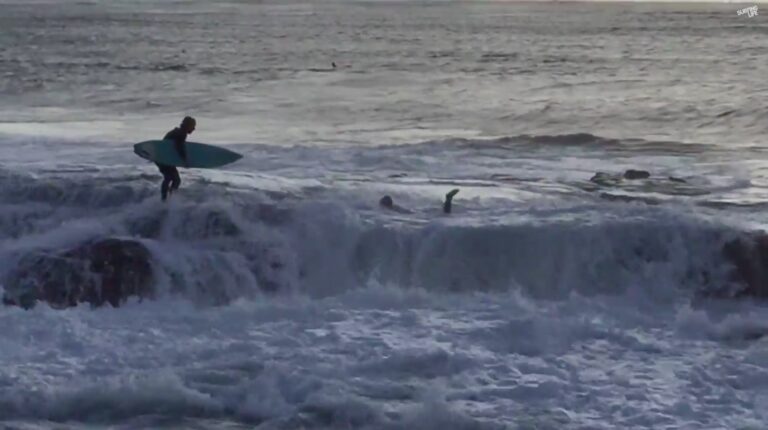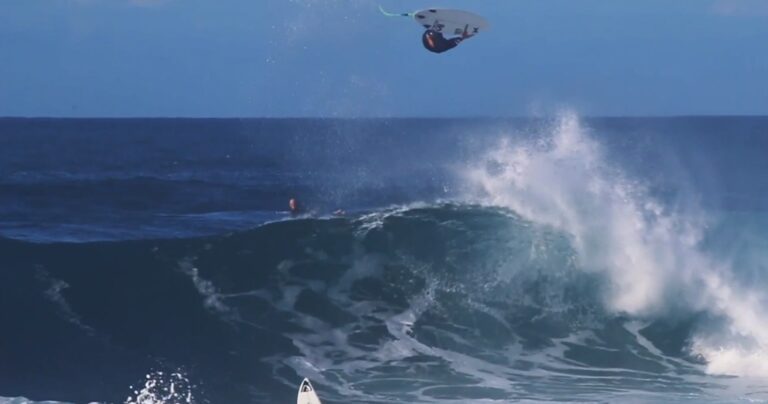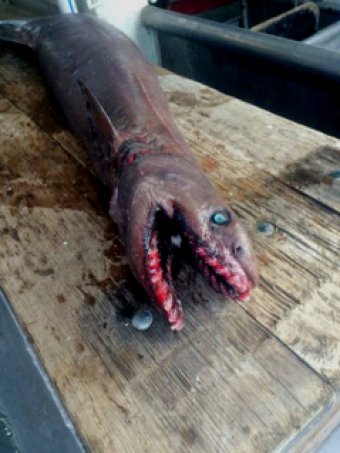
A prehistoric shark measuring around two metres in length has been caught by fishermen off the coast of Victoria, Australia.
The creature is known as a frilled shark, and goes by the scientific name of Chlamydoselachus anguineus. It is one of just two remaining species in an 80 million year-old family, and has been described as a “living fossil” due to the many primitve features it retains.
The trawler Western Alliance was fishing in waters off the coast of south-eastern Victoria at a depth of around 1km when it caught the shark. “I’vebeen at sea for 30 years and I’ve never seen a shark look like that,” said skipper David Guillot. “The head on it was like something out of a horror movie. It was quite horrific looking… It was quite scary actually.”
After it had been reeled in the frilled shark tried to attack one of the fishermen, and almost succeeded thanks to its rare flexibility. “When one of the deckhands went to pick it up by its tail, its ability to turn back on itself quite sharply was something I hadn’t seen before either,” said Guillot. “I’ve caught a lot of sharks in my life, but it seemed like it was really looking at you and quite aggressively going for you.”
Many will feel the animal should have been released straight back into the ocean. The International Union for Conservation of Nature has categorized the species as “Near Threatened”, its low reproductive rate meaning it is “likely to have very little resilience to depletion as a result of even non-targeted exploitation.” It has a gestation period of up to three and a half years.
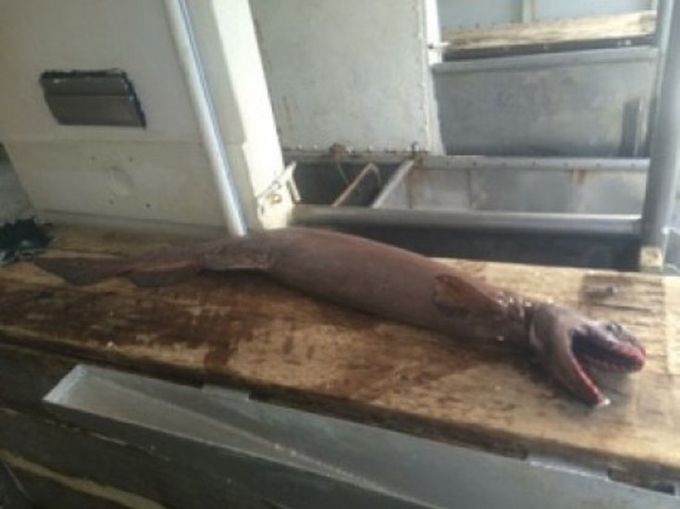
Simon Boag from the South East Trawl Fishing Association told ABC it was the first such specimen to be caught in these waters for years, adding: “It does look 80 million years old. It looks prehistoric, it looks like it’s from another time.”
Frilled sharks’ flexible jaws enable them to swallow prey whole, rather in the manner of a snake, while 300 needle-like teeth lined up in 25 rows make escape an extremely difficult task. They tend to dwell near the bottom of the Atlantic and Pacific Oceans on the outer and upper continental slope. Its name derives from its six pairs of frill-like gills. The specimen caught was close to maximum length.
The footage below is of a different frilled shark caught several years ago.
For more information, and to hear David Guillot talking about his unusual catch, click here.

